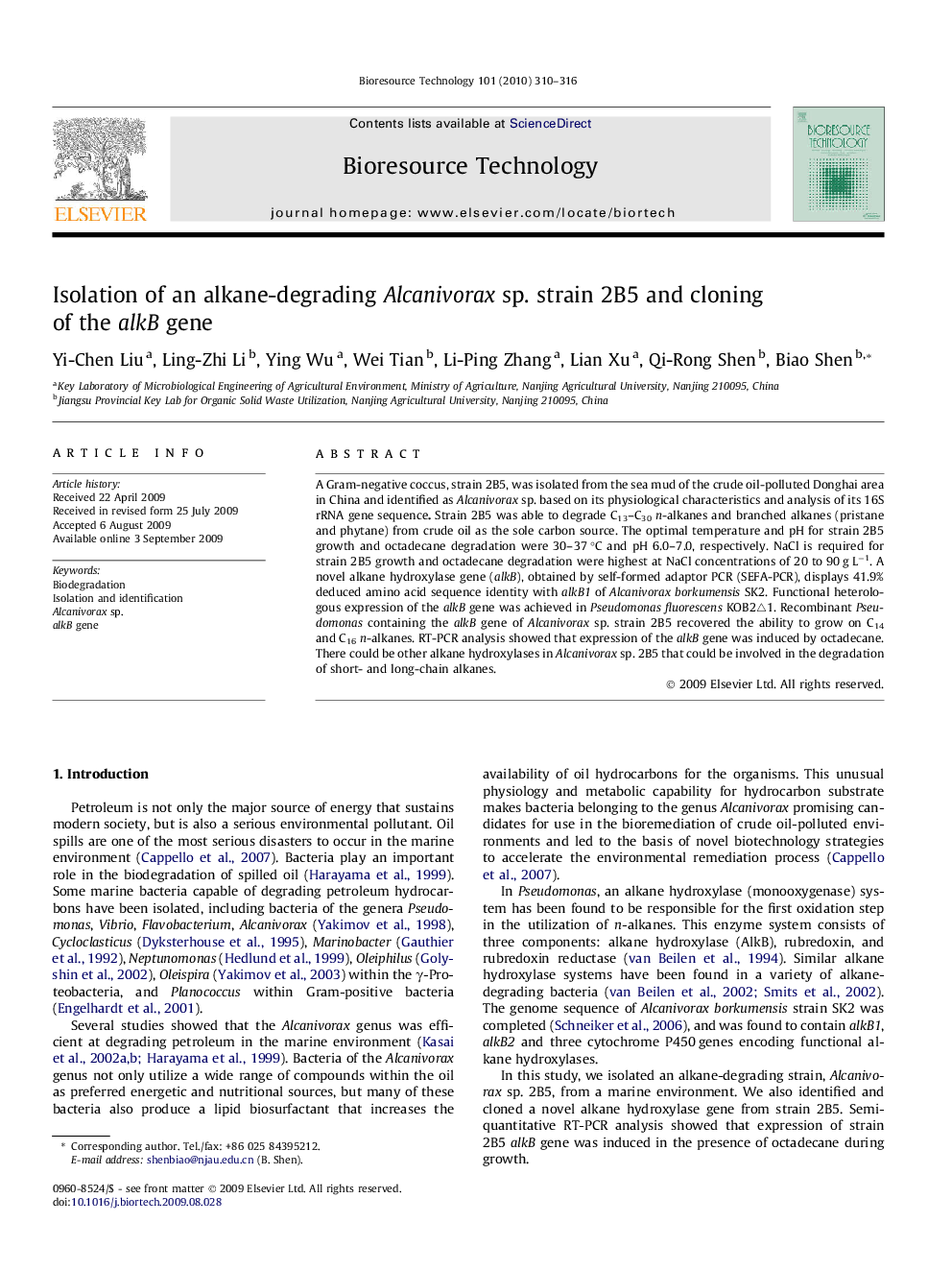| Article ID | Journal | Published Year | Pages | File Type |
|---|---|---|---|---|
| 683112 | Bioresource Technology | 2010 | 7 Pages |
A Gram-negative coccus, strain 2B5, was isolated from the sea mud of the crude oil-polluted Donghai area in China and identified as Alcanivorax sp. based on its physiological characteristics and analysis of its 16S rRNA gene sequence. Strain 2B5 was able to degrade C13–C30n-alkanes and branched alkanes (pristane and phytane) from crude oil as the sole carbon source. The optimal temperature and pH for strain 2B5 growth and octadecane degradation were 30–37 °C and pH 6.0–7.0, respectively. NaCl is required for strain 2B5 growth and octadecane degradation were highest at NaCl concentrations of 20 to 90 g L−1. A novel alkane hydroxylase gene (alkB), obtained by self-formed adaptor PCR (SEFA-PCR), displays 41.9% deduced amino acid sequence identity with alkB1 of Alcanivorax borkumensis SK2. Functional heterologous expression of the alkB gene was achieved in Pseudomonas fluorescens KOB2△1. Recombinant Pseudomonas containing the alkB gene of Alcanivorax sp. strain 2B5 recovered the ability to grow on C14 and C16n-alkanes. RT-PCR analysis showed that expression of the alkB gene was induced by octadecane. There could be other alkane hydroxylases in Alcanivorax sp. 2B5 that could be involved in the degradation of short- and long-chain alkanes.
